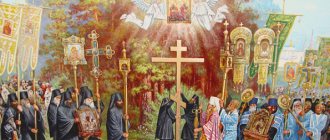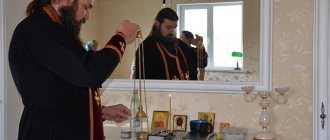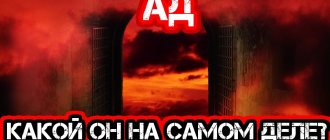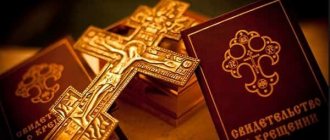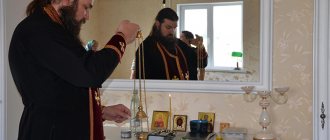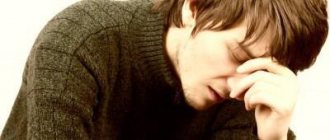Many people think that a religious procession - that is, a procession of Christians with crosses, icons, candles and censers - occurs only in the Orthodox Church. However, it is not. There is a religious procession, or rather a procession, among Catholics, Anglicans, and Lutherans. After all, this tradition arose in early Christian times, when the church was united.
Procession of the Cross in Petrograd, 1918
Procession of the Cross in 1918 could have led to the overthrow of the Bolsheviks
Christians, justifying processions with chants outside churches, came up with a certain biblical tradition, dated back to the exodus of the Jews from Egypt. Allegedly, the prototype of the religious procession was the movement of God's chosen people behind the Ark of the Covenant. It was in this way that they captured the city of Jericho - after walking around the city fortifications seven times with the singing of psalms and the sound of trumpets, from which the walls collapsed. And during the transfer of the ark to a new place, a solemn procession also always moved behind it.
What is the meaning of the procession
In practice, the Procession of the Cross is a journey on foot (sometimes using transport) of a large number of believers and clergy. During the march, people do not just mindlessly walk towards some goal, but pray and carry icons.
Procession of the Cross - a reverent procession of believers with icons and crosses
Symbolically, such a journey means the passage of a person’s life path. And you can just go somewhere, or you can go with prayer and have the Lord as your ultimate goal. In the Procession of the Cross there is a clear reflection on the meaning of human life. Where are we going? What will we find at the end of our journey?
Common prayer greatly unites people, so the formation of an Orthodox community can be called an important goal of the Procession. Unfortunately, in modern churches, especially in big cities, there may not be a church community as such.
People come, defend the service in the temple, light candles and go home. Parishioners of the same church may not know each other for years. And when people are going on a long journey, they have a wonderful opportunity to get to know their brothers in faith.
Important! The religious procession always takes place with icons, banners, and some kind of Orthodox shrines, which are carried at the very beginning of the columns of people.
Prayers and glorifications of the Lord do not cease all the way. The route can be chosen in a variety of ways, for example:
- You can go to churches or monasteries for services in a procession of the cross.
- On days of veneration of Orthodox icons, people can walk around settlements with these images.
- Sometimes moves are organized in territory that is known for tragic events.
- Any other routes of significance from an Orthodox point of view.
The main goal of the procession is the formation of the Orthodox community
The length of the route can be very different - from going around one temple to traveling to another city. What matters is not the duration of the move, but the prayerful mood of the believers, their petitions to the Lord.
Velikoretsk icon, brief history with photo
The history of the acquisition of the icon dates back to the 14th century. A peasant from the village of Krutitsy, Agalkov Semyon, was going about his business and saw sowing in the forest. On the way back, he was again attracted by the light, which beckoned him. Unable to resist, he approached this divine light and was surprised when the image of St. Nicholas the Wonderworker appeared to him. Subsequently, it turned out that the icon was capable of healing diseases. They found out this way: a village resident had sore legs and could not walk; by venerating the icon, he was healed. Since then, fame has spread about the icon. This event took place on the banks of the Velikaya River, so the icon was nicknamed Velikoretskaya. The clergy appealed to the peasants to move the miraculous icon to Khlynov in order to ensure its safety and so that more people could venerate the miraculous icon. People wanted to mark the place where the icon appeared, they built a chapel, and later a temple.
The city of Khlynov was renamed first to the city of Vyatka, then to Kirov - that is what it is still called.
The icon consists of engravings that depict the life and deeds of the saint, there are 8 of them:
- Teachings of Saint Nicholas.
- The dream of Tsar Constantine and the appearance of the wonderworker Nicholas to him.
- Rescue of Demetrius from the bottom of the sea by Saint Nicholas.
- Zion - service of St. Nicholas.
- Saving a ship from a flood by Saint Nicholas.
- Deliverance from the sword of three husbands.
- Return of Agrikov's son Vasily from Saracen captivity.
- The resting place of St. Nicholas.
In the middle is the image of St. Nicholas the Wonderworker.
In 1555, the icon visited Moscow. St. Basil's Cathedral was just under construction at that time. One of the boundaries of the temple was illuminated in honor of the miraculous icon.
In 2021, a miracle happened again in the village of Velikoretskoye. The Trifonov Monastery became famous in the courtyard of which the face of St. Nicholas the Wonderworker was discovered. One of the novices of the monastery wanted to make a shutter for a technical window in the barn where livestock was kept. It was a piece of old iron sheet.
The face of St. Nicholas the Wonderworker was discovered on an iron sheet by the head of the courtyard, who came to clear the snow. She felt that someone was looking at her. Thus, the face appeared to people once again.
About the revival of religious processions
In modern Russia, the tradition of religious processions is just being revived. The decades of godlessness that our country experienced could not but leave an imprint on the spiritual and church life of society. For many years there were practically no religious processions, despite the fact that this is a very ancient tradition and was very widespread in Tsarist Russia before the revolution.
It is noteworthy that in those days people from all segments of the population took part in such moves - ordinary peasants, nobles, and clergy. Everyone is equal before God, and our people understood this. Very often, religious processions were organized in difficult times for the people. With prayer they went to St. Sergius of Radonezh, to the Solovetsky saints.
The most famous and numerous religious procession - Velikoretsky - managed to survive even during the years of persecution. At that time, very few people took part in it; they were detained and interrogated. Now this is one of the longest, most difficult journeys, which is known throughout Russia and has thousands of participants every year.
The Velikoretsk religious procession is held every year from June 3 to June 8
The history of the origin of the concept itself is interesting. Without realizing it, the first religious procession was performed by Emperor Constantine the Great. One day he had a vision in heaven, in which he was able to discern the outlines of the Cross with the words “By this victory.”
The inspired ruler gave the order to put images of crosses on the shields and military banners of his army, and that’s how he went to battle with the enemy. This is where the tradition of carrying banners in front of a column of people came from.
Birth of a tradition
Processions of the cross are a tradition that came to us from the first centuries of Christianity. However, during the times of persecution of followers of the evangelical teaching, they were associated with considerable risk, and therefore were carried out in secret, and almost no information about them has been preserved. Only a few drawings on the walls of the catacombs are known.
The earliest mention of such a ritual dates back to the 4th century, when the first Christian emperor Constantine I the Great, before the decisive battle, saw in the sky the sign of the cross and the inscription: “By this victory.” Having ordered the production of banners and shields with the image of a cross, which became the prototype of future banners, he moved a column of his troops towards the enemy.
Further, the chronicles report that a century later, Bishop Porfiry of Gaza, before erecting another Christian temple on the site of a ruined pagan temple, made a religious procession to it to consecrate the land desecrated by idolaters.
What types of religious processions are there?
A prayer procession can be timed to coincide with a certain important date, a major holiday (for example, they are often organized on Easter). To consecrate some land, human settlements can also organize prayer processions.
Routes may also vary. The journey can go from one point to another, or it can close in a circle, as a symbol of infinity and Eternal life. The final path can symbolize the path of Christ to Golgotha or the path of the myrrh-bearing women to the Holy Sepulcher.
Important! In addition to banners, icons and any shrines, the Crucifix is always carried at the beginning of the column. That is why the procession is called the Cross, and such a tradition is supported not only in ours, but also in the Catholic tradition.
Thus, most often religious processions are performed by:
- on significant dates of the church annual circle;
- to consecrate places where any miracles or signs were performed;
- during a funeral;
- in difficult times of trial.
An important function of such a procession has always been missionary activity. When religious processions take place in populated areas, especially villages, residents had the opportunity to join in the common prayer.
Procession of the Cross Sevastopol-Kerch-Smolensk
In the modern world, religious processions are not always performed exclusively on foot. Transport can be used to cover long distances. Nowadays there are special biker processions, when a column of people moves on motorcycles.
If the procession is part of a pilgrimage trip, then part of the path can also be covered by transport. Also now sometimes special trips are organized for children and people with disabilities. Such activities are very important because they allow all segments of the population to be involved in prayer work.
Midnight Office
The festive church service, during which a religious procession takes place, begins on the evening of Holy Saturday at 20:00. Its first part is called the Midnight Office. It is accompanied by sad chants dedicated to the suffering on the cross and the death of the Savior. The priest and deacon perform incense (fumigate with a censer) around the Shroud - a cloth plate with an image of Christ laid in the coffin. Then, with the singing of prayers, they take it to the altar and place it on the Throne, where the Shroud will remain for 40 days until the Feast of the Ascension of the Lord.
Procession for Easter
The Easter holiday stands apart in the liturgical circle. Processions of the cross on the Feast of Holidays are held in almost every church and begin on the evening of Holy Saturday. The beginning of this service is mournful, tragic, filled with sadness about the death of Christ.
The Shroud of the Lord is solemnly transferred to the altar of the temple, where it will remain until the Ascension. Easter Matins begins in the village, during which the festive bell ringing is already heard, heralding the joy of the resurrection of Christ.
The Easter procession is held in every church
In this part of the service, all parishioners leave the church for a festive and majestic procession. It is no longer mournful, but joyful and bright. They walk around the church three times, stopping at the entrance doors, which remain closed until the third circle.
The locked doors of the temple symbolize the stone with which the entrance to the Holy Sepulcher was rolled up. On the third circle, the doors open, symbolically indicating that the stone has been rolled away from the Tomb. Next comes the joyful and bright Easter Matins.
It is interesting that the most complex bell ringing takes place precisely during the Easter Procession. It is called "trezvon". Such a chime cannot be heard often in a church, so on Easter the bells sound very special.
Emperor in hair shirt
It is also known that the last emperor of the united Roman Empire, Theodosius I the Great, used to perform religious processions with his soldiers every time he went on a campaign. These processions, preceded by the emperor, dressed in a hair shirt, always ended near the tombs of the Christian martyrs, where the honorable army prostrated themselves, asking for their intercession before the Heavenly Powers.
In the 6th century, religious processions in churches were finally legalized and became a tradition. They were given such great importance that the Byzantine emperor Justinian I (482-565) issued a special decree according to which it was forbidden for the laity to perform them without the participation of clergy, since the pious ruler saw in this a profanation of the sacred rite.
